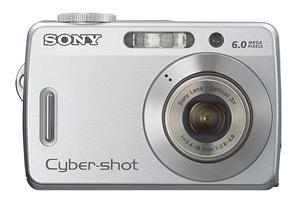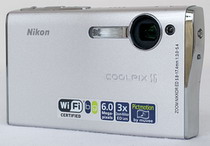Digital Photos And Digital Cameras - Advantages
here is no debate that digital cameras are going to take over the photography market and with time we will see less and less film cameras sold and used. It is beneficial to take a moment and try to list the advantages of digital cameras and digital photos and put some order in why everybody likes them so much. In this article you will find that list. Digital photos and digital cameras have many advantages and allow many new usages that were not possible with film. Here are a few:
Low photo cost: Photos taken with a digital camera literally cost nothing. The photos are kept in erasable memory and thus can always be discarded at no cost. Viewing the photos is immediate and does not cost anything (there is no film development cost). Also the photos you would like to keep can be copied to digital media such as a computer’s hard disk. With storage prices going down the cost of saving a photo on disk is practically zero.
The capacity: With ever growing storage capacities digital cameras today can hold hundreds and sometimes thousands of photos on a single media. You can always have a few more in your pocket and changing is very fast. The result is that a digital camera has practically infinite capacity. You can shoot as many photos as you want and at the end of the day just dump them on your computer’s disk. There is no time lost changing film and there is no photo opportunities lost due to lack of film or reserving film for later.
The feedback: One of the great advantages of digital cameras is instant feedback. Almost all digital cameras include a small LCD screen. Once a photo is shot you can go back and watch it on that screen. The ability to see how the photo looks like results in better photos. If the photo is not good you can take another one. Being able to see the photos on the spot results in an educated decision how to fix a photo or how to compose it better. It takes a lot of the guessing away from photography.
New shooting angles: With digital cameras you can take photos without your eye glued to the viewfinder. Overhead shots where you raise the camera over your head are much easier since you can still see what the camera is shooting by just looking up at its LCD screen. You are not limited anymore to angles where you can look through the viewfinder – you can shoot from any angle that the LCD is visible from. You can always shoot blindly like photographers used to do with film cameras.
Correcting photos: With digital cameras photos can be corrected using photo editing software. Some correction abilities are built-in the cameras but many more are available as software packages for your PC. Such corrections include red eye removal, contrast enhancements and more.
Changing conditions: With digital cameras the settings of the sensor can be changed instantly for each photo taken. With a click of a button the camera can be put in an indoor or outdoor mode, low light, night photography etc. Some cameras will automatically sense the scenario and set the sensor mode accordingly. This is literally like changing a roll of film to the optimized one for every photo you shoot – the best ISO, color features and more.
Longevity: Digital photos never lose their quality. A digital photo will be identical today and in 500 years. As long as you refresh the digital media every now and then and back it up your photos will literally last forever with no quality degradation. Digital photos do not turn yellow, they do not fold or get torn.
Ziv Haparnas is a technology veteran and writes about practical technology and science issues. This article can be reprinted and used as long as the resource box including the backlink is included. You can find more information about photo album printing and photography in general on www.printrates.com - a site dedicated to photo printing. Please visit http://new-best-camera-digital-review-cheap.blogspot.com/





